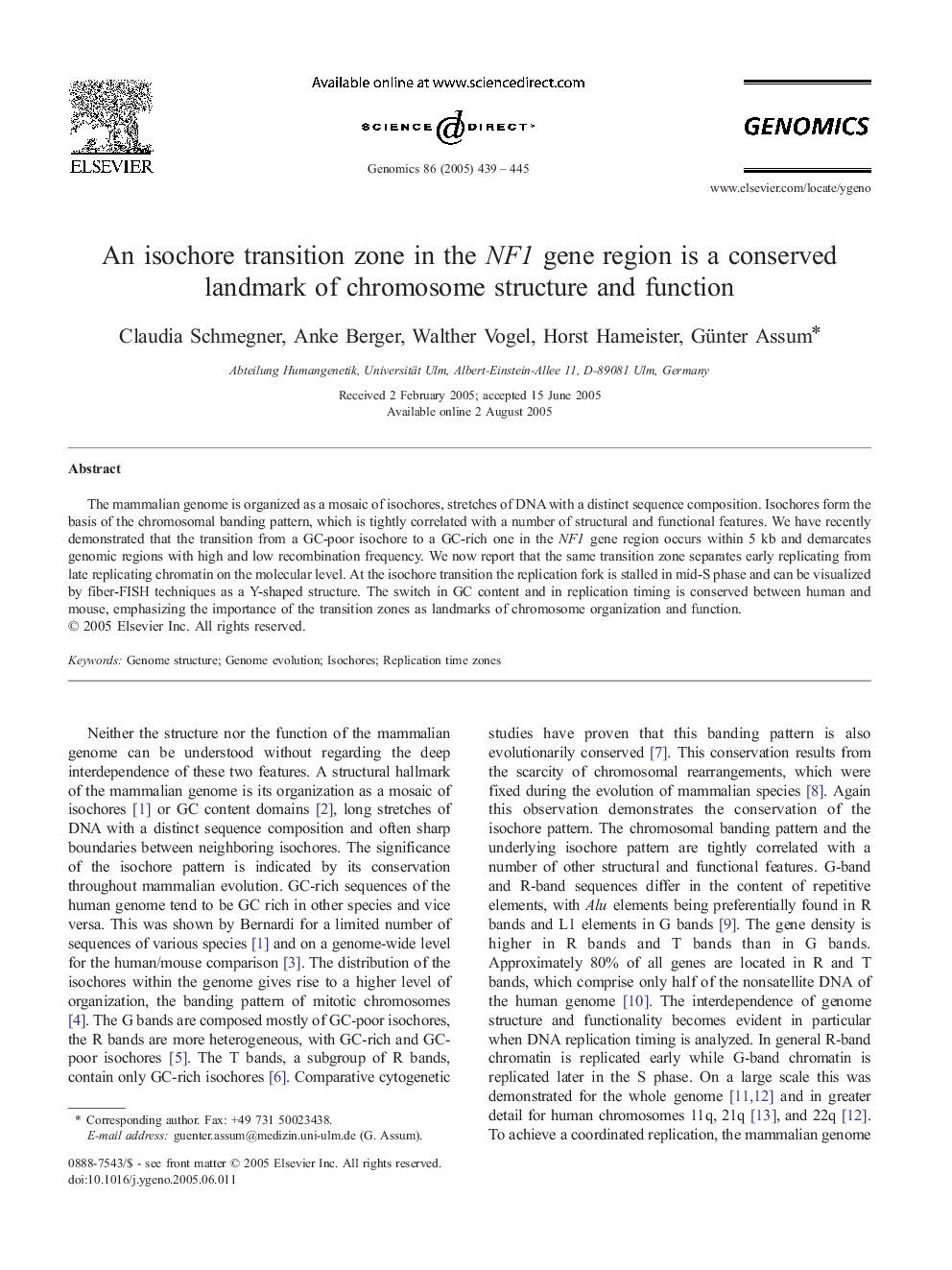| Article ID | Journal | Published Year | Pages | File Type |
|---|---|---|---|---|
| 9131852 | Genomics | 2005 | 7 Pages |
Abstract
The mammalian genome is organized as a mosaic of isochores, stretches of DNA with a distinct sequence composition. Isochores form the basis of the chromosomal banding pattern, which is tightly correlated with a number of structural and functional features. We have recently demonstrated that the transition from a GC-poor isochore to a GC-rich one in the NF1 gene region occurs within 5 kb and demarcates genomic regions with high and low recombination frequency. We now report that the same transition zone separates early replicating from late replicating chromatin on the molecular level. At the isochore transition the replication fork is stalled in mid-S phase and can be visualized by fiber-FISH techniques as a Y-shaped structure. The switch in GC content and in replication timing is conserved between human and mouse, emphasizing the importance of the transition zones as landmarks of chromosome organization and function.
Related Topics
Life Sciences
Biochemistry, Genetics and Molecular Biology
Genetics
Authors
Claudia Schmegner, Anke Berger, Walther Vogel, Horst Hameister, Günter Assum,
